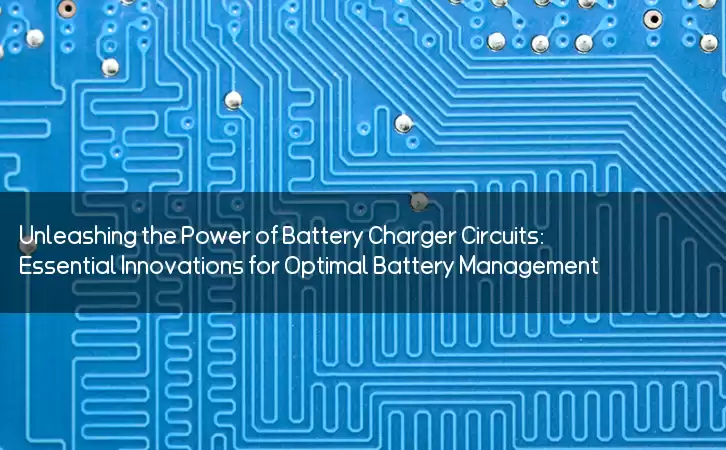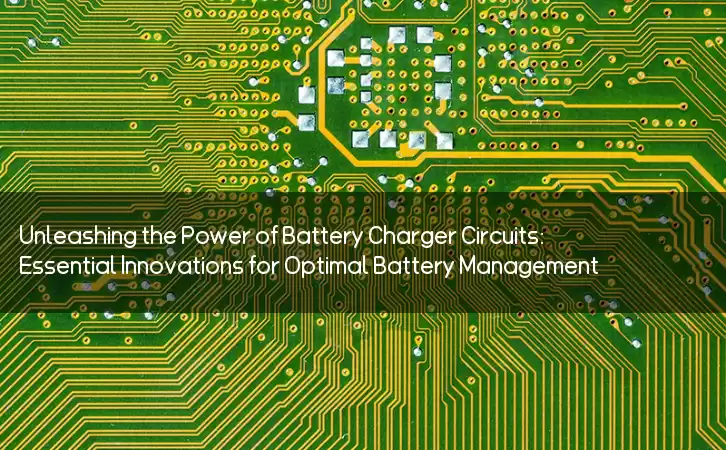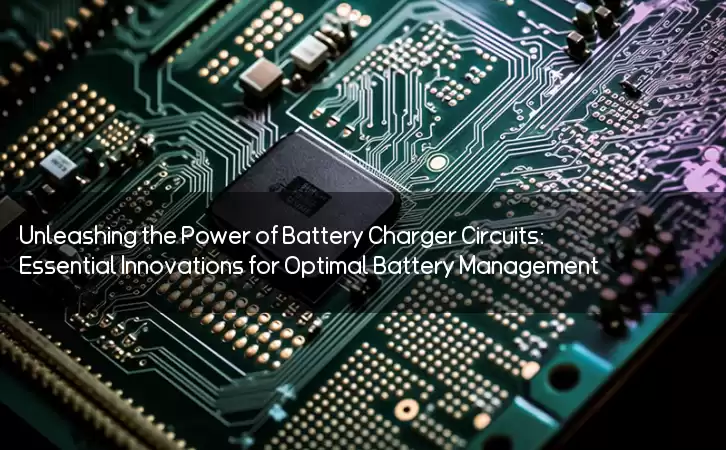Information Center
Unleashing the Power of Battery Charger Circuits: Essential Innovations for Optimal Battery Management
Published:2023-07-02 00:35:02 Author:Green WCND Views:55A battery charger circuit is an essential component that is widely used in portable electronic devices to ensure that the device always has enough power to operate. With the rise in demand for portable electronic devices, the need for efficient battery chargers is gaining more prominence.

In a battery charger circuit, the main function is to convert the alternating current (AC) supply into a direct current (DC) one, and then use it to charge the battery. The charger circuit coordinates with the battery to provide the necessary charging current and maintain the battery’s voltage within its safe operating limits.

One of the crucial elements in a battery charger circuit is the power supply that converts the power from AC to DC. Switched-Mode Power Supply (SMPS) is a popular approach used in many circuits for the power conversion process. Other topologies include the linear voltage regulator and resonant converter.

Another component is the charge controller that controls the charging process by regulating the voltage and current supplied to the battery. The charge controller has two basic functions, which are constant voltage and constant current modes. The constant voltage mode charges the battery to maximum voltage, while the constant current mode charges it with a steady flow of current.
The battery charger circuit has many advantages, some of which include:
1) They are reliable and use advanced technology to ensure the battery is charged safely and timely.
2) They are portable, making them convenient for use in devices such as smartphones, laptops, and electronic toys.
3) They are highly efficient, reducing the time it takes to charge a battery.
4) They extend the life of the battery by ensuring it is charged correctly.
5) They are cost-effective and easy to manufacture, making them accessible to a wide range of users.
In conclusion, battery charger circuits are critical components used in many portable devices to ensure effective battery management. With the increase in technological advancements and the demand for more efficient power sources, the need for better battery chargers will continue to grow. Engineers will need to develop innovative methods to improve battery charging times, reduce energy waste, and boost battery life.
Power Adapter Design and Customization Guide for Portable Electric KettlesI. Common Design Types for Portable Electric Kettle Power AdaptersPortable electric ke···
I. Common Design Types of Power Adapters External Independent Type (Most Common) Design: A standalone adapter (e.g., "black brick") connected to the p···
Handheld Vacuum Cleaner Power Adapter Selection GuideIntroductionHandheld vacuum cleaners have become a mainstream tool for household cleaning due to their port···
Drill Power Adapter Selection Guide.drill-container { font-family: Arial, sans-serif; line-height: 1.6; max-width: 800px; margin: 0 auto; padding: 20px; } .dril···





